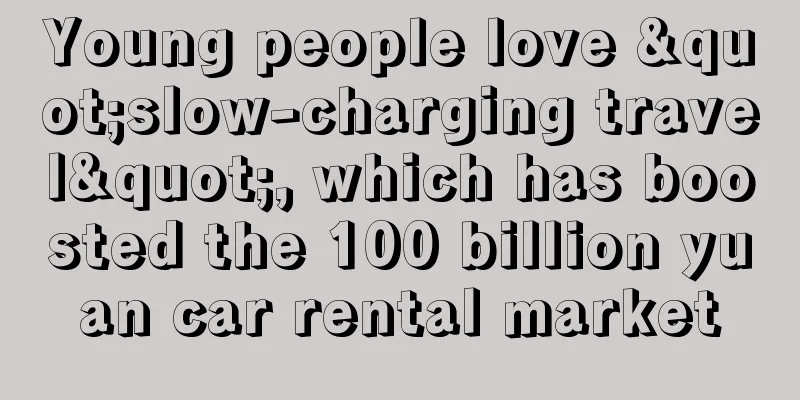Data-driven business: Are you the driver or the donkey pulling the cart?

"Data-driven business" is a very fashionable phrase, but it is also a phrase that gives many students a headache. Because this thing can be seen but not touched. Every day, we just hear "drive" and "drive", but we don't know how to drive it. Moreover, when I ask a question, the salesperson scolds me. When I give an opinion, the salesperson doesn't listen. They always complain that the data analysis is not in-depth enough or the suggestions are not specific enough. What should I do? 1. What is a driver? When it comes to driving, the most typical scene is the driver driving a horse-drawn carriage. The horse pulls the carriage, and the driver holds a whip. When he shouts "Gee!", the horse pulls the carriage and runs fast. So the question is: how does the driver drive the horse to pull the carriage?
This is what drives intuitiveness.
The same is true in enterprises. If you want to drive business, you must first solve four major problems (as shown below): 2. The role of data in drivingHowever, please note that these seemingly simple actions are not easy to do:
As you can see, all four questions are related to data! The most important one is the quantitative goal. The starting point and the end point directly determine which road to take, how many roads there are, how much fodder to prepare on the road, and what pitfalls there will be. So if the goal is not clear, nothing can be done. The goal must not only be determined, but also clear. Otherwise, just saying: "Take me around Ruoqiang County" sounds simple. But when you get there, you will find that this county is twice as big as Zhejiang Province! You can never run all the way to the end. Here comes a question: What if we have never driven a horse-drawn carriage? What if we have never walked this road? What if we change the horses we use from Mongolian horses to Arabian horses? These are all new problems with no data. In the absence of data, we can do a test first. Run a small area to see the road conditions, see the horse's physical strength, and learn how to pull a horse-drawn carriage. These are the two basic data-driven models:
3. Data-driven advanced gameplayNote: The above discussion is based on the premise that "the horse cannot be changed, and the cart cannot be changed." If the driver's driving goal is not "driving the horse" but "driving the cart to deliver the goods to the destination faster and cheaper," there are more things that can be done:
This is a more advanced way of driving. Starting from the goal, not limited to the means, choose a more appropriate method to achieve the goal. 4. A stupid way to drive dataQuestion: If one day you see a rickshaw driver:
Please tell me: Do you think this driver has a powerful cosmic force, or do you think this driver is a lunatic? Of course he is a lunatic! A carriage, a carriage, a carriage with horses is called a carriage. Isn't it funny that the driver doesn't study how to control the horse or how to strengthen the body of the carriage, but tries to run instead of the horse! It's common sense that pigs can't pull a carriage, isn't it funny to use pigs to pull a carriage! Isn't it even funnier to try to bring a dead pig back to life! He has the ability to bring the dead back to life, so why is he still a coachman? ? ! ! However: When the driver becomes a data analyst, the carriage becomes operations, marketing, planning... and the whip becomes "big data", "artificial intelligence", "algorithm model"... You will find that trying to whip an old sow to pull a cart is happening in various companies, and it is happening one after another and very exciting. When many businesses hear the words "data-driven", they immediately give up and rely on data for everything. Many businesses place all their hopes on "100% accurate predictions" without considering other possibilities or making contingency plans. Many business people talk a lot about "data analysis must be specific", and then even leave it to the data to make a few pages and draw a few buttons. Many businesses have problems with their own processes and low product quality, but are too lazy to make improvements themselves and so rely entirely on "accurate data push." This is not asking a driver to pull a cart. This is not using a whip to beat a dead pig. Not to mention those who don’t even collect basic data, are too lazy to do data analysis, and don’t even know the business goals. The kind who comes up and shouts: "We want to improve our performance, please analyze the specific ways to improve performance" - let's put it this way, when you go to the temple to worship the Buddha, you have to tell the Buddha a specific thing: "Please bless me to make 1 million" or "Please bless me to have a son" and so on. Besides, your data analyst is not a Buddha. 5. Another stupid way to use data-drivenQuestion: If one day you see a rickshaw driver:
Do you think this driver is a scientist or a nerd? Of course he is a nerd! Only basic science has systematic books for people to learn. For something as practical as pulling a cart, if you don’t go to the scene to observe, what’s the point of finding Tou Teng’a? Because Xiao Ma Ge’s name has the character “Ma” in it, so all his employees can drive a horse-drawn carriage? Many new data professionals often make the mistake of being limited to books, attempting to mechanically apply book knowledge to solve practical problems, and blindly believing in so-called "big companies" and "senior levels". However, when you mention understanding the business, many newcomers go to the other extreme: they ask questions directly. They believe whatever others say. Where is the data? Where is the test? Where is the summary? They forget everything. Afterwards, they are still complacent: I have communicated with the business! Maybe they have been sold out and are still helping others count money. Therefore, data-driven business requires the joint efforts of data and business. The business itself has a clear direction and strives to improve business capabilities such as design, operation, art, and product development. Only by carefully collecting data, monitoring the process, reviewing the results, summarizing experience, and testing innovations can the data be maximized. However, the popularity of artificial intelligence in the past two years has made data-driven business even more chaotic. What is popular now is that businesses are too lazy to think and expect the magic of the "100% accurate prediction" model to help them see the sky. Then the data thought that he could really make a "100% accurate prediction", as long as he could find a great god to give him a pdf version of "21 Days 0 Basics 100% Accurate Prediction" and save it to the computer D drive - dry goods - data mining - algorithm model folder. The result, of course, is that he is riding a blind horse and facing a deep pool in the middle of the night. Author: Down-to-earth Teacher Chen Source: WeChat public account "Down-to-earth Teacher Chen" |
<<: Why is brand building still focusing on slogans today???
>>: Lei Jun tells stories, but the automotive industry can’t learn from him
Recommend
What are the reasons for Shopee to associate stores? What are the consequences of being associated?
Shopee cross-border e-commerce has been a popular ...
6 major pitfalls in operating self-media IP!
This article analyzes the six taboos that need to ...
Is cross-border e-commerce independent station business easy to do? How to choose a platform?
Now more and more seller friends are interested in...
Who is responsible for the Manner coffee incident?
There is a lot of discussion about the Manner Coff...
When promoting e-commerce on Douyin, it is essential to have a shelf market
In Douyin e-commerce, the importance of shelf fiel...
Xiaohongshu local store traffic surged 200%
It has become a common phenomenon for offline stor...
How to manage brand equity?
The author of this article introduces in detail ho...
Which African cross-border e-commerce platform is better? How to choose?
Now many domestic e-commerce merchants are very op...
How to avoid being tricked by the e-commerce platform’s 618 pricing?
I didn’t expect that the “routines” of the 618 act...
What is the KYC audit for Amazon Europe? How can I be sure that the audit has started?
If an Amazon merchant triggers a KYC audit, then b...
Can I follow my own sales when shipping from Amazon FBA? What are the benefits?
Generally, following sales is not allowed on Amazo...
From Zhang Xiaohui's entry into Taobao to the beauty industry's large traffic and small incision
This article deeply analyzes the refined operation...
Brand Black Red is not Red!
Brand marketing failures happen from time to time....
This is the best data analysis I have ever seen [Annual Work Plan]
How to do data analysis specifically? How to do it...
The boss asked why the data fluctuated abnormally and how to analyze it!
This article analyzes how to accurately judge data...









